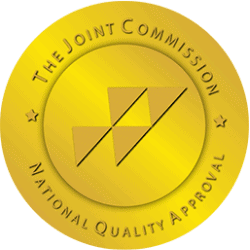Understanding BORG (Blackout Rage Gallon)
The BORG (Blackout Rage Gallon) is a viral social media trend, particularly popular on TikTok, where individuals mix alcohol, typically vodka, with water, sweet flavorings, and sometimes hangover remedies like Liquid IV or Pedialyte in a gallon jug. This trend has gained traction among Gen Z college students, but it poses significant risks similar to binge drinking, such as alcohol poisoning and severe health consequences.

Substance Use Disorder in College Students: An Overview
Substance abuse among college students remains a significant concern, with various trends emerging over time. Recent studies indicate that approximately 53% of full-time college students aged 18-22 reported drinking alcohol in the past month, while about half of the 5.4 million college students in the U.S. admit to binge drinking or drug use at least once a month. These statistics highlight the prevalence of substance use disorders within this demographic.
What Factors Contribute to the Development of Substance Abuse?
Several factors contribute to the development of substance use disorders among college students. The college environment often encourages experimentation, with many students seeking to manage stress, academic pressures, or social anxiety through substance use. Additionally, the perception that certain substances, like stimulants or opioids, can enhance academic performance or help with mental health issues exacerbates misuse.
Social media plays a crucial roles in shaping behaviors among young people today. Trends such as the BORG (Blackout Rage Gallon) gain traction through platforms like TikTok, where college students share and popularize risky drinking activities. These platforms provide a space for students to engage in and normalize such behaviors, often without fully understanding the associated risks.
Psychological and social factors further contribute to substance abuse trends. Peer pressure, the desire for social acceptance, and the stress of academic and personal life transitions can drive students toward substance use. The normalization of these behaviors through social media and college culture perpetuates these trends, making it challenging to address the underlying issues.
What is Binge Drinking?
Binge drinking is defined as the consumption of an excessive amount of alcohol in a short period, typically resulting in a blood alcohol concentration (BAC) of 0.08% or higher. This often equates to about five or more drinks for men, or four or more drinks for women, within about two hours. Binge drinking poses numerous health risks, including alcohol poisoning, accidental injuries, and long-term effects like liver disease and cognitive impairments. Socially, it can lead to relationship issues, academic problems, and legal troubles.
Among college students, binge drinking is particularly prevalent, with approximately 50% of college students engaging in this behavior at least once a month. Addressing binge drinking requires targeted education and intervention strategies to reduce its incidence and mitigate its harmful effects.
Statistics on Binge Drinking and Substance Abuse Among College Students
Common substances abused by college students include alcohol, marijuana, stimulants, and opioids. The misuse of stimulants, like Adderall, is particularly concerning, given its association with academic performance enhancement. Pain medications and sedatives also see significant misuse, with 9.1% and 9.4% of students, respectively, admitting to such behavior. Other concerning figures include the following:
- Approximately 1 in 6 U.S. adults binge drink about four times a month, consuming around seven drinks per binge.
- In the U.S., over 90% of adults who drink excessively report binge drinking.
- Among full-time college students aged 18-22, about 29% reported binge drinking in the past month.
- Nearly half of people who drink engage in binge drinking, defined as having four or more drinks in a couple of hours.
These statistics highlight the widespread nature of binge drinking, particularly among college students.
How Much Alcohol is in a BORG?
A BORG (Blackout Rage Gallon) typically contains a mix of alcohol, usually vodka, and other ingredients like water and flavorings. The amount of alcohol can vary, but a common recipe includes about a fifth of vodka, which is approximately 750 milliliters or 25.4 ounces. This amount of vodka is mixed with water and flavor enhancers in a gallon jug, making it a potent drink. The exact alcohol content can vary based on the specific recipe and the amount of vodka used.
For example, let’s assume the mixture is a whole fifth of vodka with the remaining ingredients being water based. To calculate the strength of the BORG mixture, we need to determine the alcohol by volume (ABV) of the final mixture.
- Volume of Vodka: A fifth of vodka is approximately 750 milliliters (ml).
- Typical ABV of Vodka: Vodka usually has an ABV of around 40%.
- Volume of Water: Since a gallon is about 3,785 ml, the remaining volume after adding vodka is 3,035 ml of water.
Total Volume of the Mixture: 750 ml (vodka) + 3,035 ml (water) = 3,785 ml
Alcohol Content in the Mixture:
- The vodka contributes 750 ml * 40% = 300 ml of pure alcohol.
ABV of the Mixture:
- ABV = (Volume of pure alcohol / Total volume of mixture) * 100
- ABV = (300 ml / 3,785 ml) * 100 ≈ 7.9%
So, the BORG would have an approximate ABV of 7.9%, making it quite strong compared to typical beers or mixed drinks.
Is Drinking a BORG Safe?
Drinking a BORG (Blackout Rage Gallon) can pose significant health risks due to its high alcohol content. Here are some considerations regarding its safety:
- High Alcohol Content: A BORG typically contains a large amount of alcohol, which can lead to rapid intoxication and increase the risk of alcohol poisoning.
- Lack of Control: Consuming alcohol in such large quantities can make it difficult to monitor and control intake, leading to overconsumption.
- Dehydration: Alcohol is a diuretic, and consuming it in large amounts can lead to dehydration, especially if not enough water is consumed alongside.
- Impaired Judgment: High levels of intoxication can impair judgment and coordination, increasing the risk of accidents and injuries.
- Health Risks: Long-term health risks include liver damage, addiction, and other alcohol-related health issues.
While some people might consume BORGs in social settings, it's important to be aware of these risks and to drink responsibly. It's always advisable to know your limits, stay hydrated, and ensure you have a safe way to get home. If you're concerned with your drinking, speak to one of our alcohol use disorder professionals here at Ambrosia Behavioral Health in Florida. We can help you curb or even stop your alcohol consumption.
Can You Get Alcohol Poisoning from BORG Drinking?
Yes, you can get alcohol poisoning from drinking a BORG. The high alcohol content in a BORG, typically from a fifth of vodka mixed into a gallon, can lead to rapid and excessive alcohol consumption. Alcohol poisoning is a serious and potentially life-threatening condition that occurs when a person consumes a toxic amount of alcohol, usually in a short period.
Signs of Alcohol Poisoning Include:
- Confusion or stupor
- Vomiting
- Seizures
- Slow or irregular breathing
- Hypothermia (low body temperature)
- Unconsciousness and inability to wake up
If you suspect someone has alcohol poisoning, it's crucial to seek emergency medical help immediately. Drinking responsibly and being aware of the risks associated with high alcohol consumption can help prevent such dangerous situations.
What Should Someone Do If Drinking a BORG Makes Them Sick?
If drinking from a BORG makes you feel sick, it's important to take immediate action to ensure your safety and well-being. Here are some steps you can take:
- Stop Drinking: Cease consuming any more alcohol immediately.
- Stay Hydrated: Drink water to help rehydrate your body, but do so slowly to avoid overwhelming your stomach.
- Find a Safe Place: Sit or lie down in a safe, comfortable environment where you can be monitored by friends or family.
- Monitor Symptoms: Keep an eye on your symptoms. If you experience severe symptoms like confusion, vomiting, seizures, slow breathing, or unconsciousness, seek medical help immediately.
- Seek Medical Attention: If symptoms are severe or worsening, call emergency services or go to the nearest hospital. Alcohol poisoning is a medical emergency and requires prompt attention.
- Avoid Self-Medication: Do not take any medications to try to counteract the effects of alcohol, as this can worsen the situation.
- Rest: Allow your body time to recover by resting in a safe place.
It's crucial to drink responsibly and be aware of your limits to prevent such situations. If you find yourself frequently feeling sick from drinking, it might be worth reevaluating your drinking habits and seeking support if needed.
Alcohol Addiction Treatment
At Ambrosia Behavioral Health we offer many different treatment options for anyone suffering from alcohol use disorder. Our individualized approach to treatment provides each person a unique program that is tailored to their needs. Within this approach we offer many options for getting you the help you need.
Inpatient treatment for alcohol use disorder at rehab centers like Ambrosia Behavioral Health offers a comprehensive and structured approach to recovery. This type of treatment begins with detox, a critical phase where individuals undergo medical supervision to safely manage the withdrawal symptoms that occur when alcohol use is abruptly reduced or stopped. Detox is crucial because withdrawal can be physically and psychologically challenging, and having medical professionals on hand helps ensure safety and comfort during this period.
Following detox, patients transition into residential programs, where they benefit from living in a supportive and structured environment. These programs provide 24/7 care, which is essential for individuals who need continuous support to avoid relapse during the early stages of recovery. The round-the-clock care not only addresses immediate health needs but also allows for monitoring and adjusting treatment plans as necessary.
Outpatient treatment for alcohol use disorder at rehabilitation centers such as Ambrosia Behavioral Health offers a flexible yet comprehensive approach to recovery. This type of treatment is ideal for individuals who require support but also have responsibilities like work, school, or family commitments that they need to maintain while undergoing treatment. Outpatient programs are less intensive than inpatient treatment, allowing individuals to live at home and attend treatment sessions at the facility.
Intensive outpatient programs (IOP) provide flexible scheduling that can accommodate work or school commitments. IOPs typically involve several therapy sessions each week, focusing on teaching coping strategies, relapse prevention techniques, and helping individuals maintain sobriety. These programs are beneficial for those who need more support than standard outpatient care but less than what a PHP provides.
Standard outpatient programs offer the most flexibility, often involving weekly therapy sessions that fit into an individual's routine. These programs are well-suited for those with milder addiction issues or for individuals transitioning from more intensive treatment. They provide ongoing support and accountability, helping individuals stay on track with their recovery goals.
What to Learn More About Alcohol Addiction Treatment?
 In a world where social media trends often glamorize risky behaviors, it's crucial to recognize the dangerous implications of drinking phenomena like BORG. College students, eager for new experiences and peer approval, may find themselves caught in these hazardous trends without fully understanding the potential consequences to their health and safety. For students and parents alike, it's important to acknowledge these risks and take proactive steps to ensure well-being.
In a world where social media trends often glamorize risky behaviors, it's crucial to recognize the dangerous implications of drinking phenomena like BORG. College students, eager for new experiences and peer approval, may find themselves caught in these hazardous trends without fully understanding the potential consequences to their health and safety. For students and parents alike, it's important to acknowledge these risks and take proactive steps to ensure well-being.
Ambrosia Behavioral Health in Florida offers the kind of supportive, professional care needed to address these issues early on. Whether you're concerned about your own drinking habits or worried about a loved one, reaching out for help can pave the way for a safer and healthier future. Don't wait until it's too late—contact Ambrosia Behavioral Health today and take the first step towards positive change!



